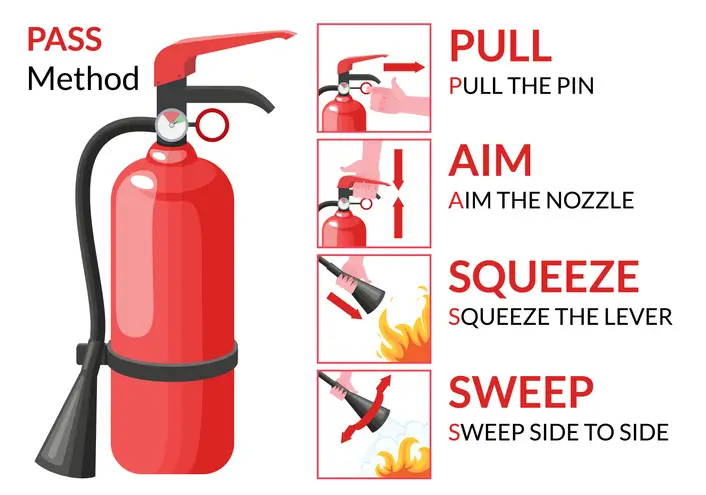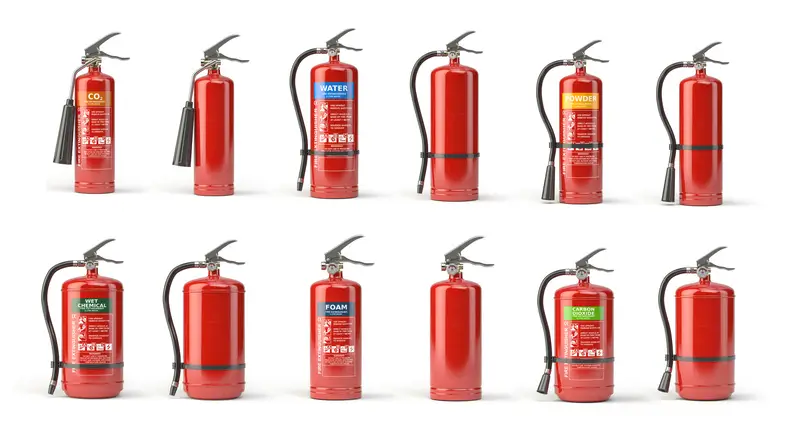In an emergency, knowing how to use a fire extinguisher can make the difference between a minor incident and a devastating disaster.
Fires can spread rapidly, and a quick, informed response can protect lives and limit property damage. However, using a fire extinguisher requires more than just grabbing it off the wall — it involves knowledge, composure, and caution.
This fire extinguisher safety guide is designed to help you understand when and how to use these tools and effectively. Being prepared and informed ensures you can act responsibly when every second counts.
Know When to Use a Fire Extinguisher

Before attempting to use a fire extinguisher, carefully assess the situation. Only proceed if the fire is small, contained (like in a trash bin or on a stovetop), and not spreading rapidly. You should be properly trained in extinguisher use and always ensure there is a clear, safe escape route behind you.
Never let the fire block your exit path. If the fire is growing, producing heavy smoke, or involves hazardous materials, evacuate immediately and call emergency services. Your safety and the safety of others must come first.
Using a fire extinguisher improperly or in unsafe conditions can lead to injury or worsen the fire. When in doubt, don’t take risks — leave the area and alert the professionals.
Types of Fire Extinguishers

Fires are classified by the materials involved, and using the correct type of fire extinguisher is critical for safety and effectiveness. Here’s a breakdown of the main classes:
For ordinary combustibles like wood, paper, cloth, and some plastics.
For flammable liquids such as gasoline, oil, grease, and solvents.
For electrical fires involving live wires, appliances, or circuit panels.
For flammable metals, typically found in laboratories or industrial facilities.
For kitchen fires involving cooking oils and animal or vegetable fats.
The PASS Technique: How to Use a Fire Extinguisher
When it’s safe to fight a fire, use the PASS technique — a simple, four-step method that helps you operate a fire extinguisher effectively:

Hold the extinguisher upright with the nozzle pointed away from you. Pull the pin located at the top to break the tamper seal and unlock the extinguisher.
Direct the nozzle or hose at the base of the fire. Aiming at the flames won’t extinguish the fire; you must target the fuel source.
Press the handle or trigger firmly and evenly to release the extinguishing agent. Be prepared — the discharge may start quickly and with force.
Sweep the nozzle from side to side, covering the entire base of the fire with a steady, controlled motion. Continue until the fire is completely out.
Maintain a safe distance — generally six to eight feet — and only move closer as the fire diminishes. Always keep your back to a clear exit in case you need to evacuate quickly. Never turn your back on a fire, even if it appears extinguished. Stay alert: if the fire grows, produces heavy smoke, or reignites, evacuate immediately and call emergency services.
After Using the Fire Extinguisher
Even if the fire seems to be out, monitor the area closely. Fires can reignite from hidden embers or smoldering materials. If the fire doesn’t go out quickly or begins to spread, evacuate immediately. Never turn your back on a fire — always keep it in sight and be prepared to retreat.

After using a fire extinguisher, contact emergency services so professionals can inspect the site. There may be unseen hazards or damage that require attention.
If you’re in a workplace setting, report the incident to your supervisor or safety officer, even if the fire was successfully extinguished.
Proper documentation and follow-up are essential for maintaining a safe environment. This is extremely relevant if you’re using fire extinguisher in a construction site or similar worksites that have plenty of non-fire-related hazards.
Maintenance and Inspection Tips
Regular maintenance is essential to ensure fire extinguishers work when needed. Start by checking the pressure gauge — the needle should be in the green zone. A low reading may indicate the extinguisher won’t function properly. Ensure the extinguisher is in its designated location, securely mounted, and unobstructed — never hidden behind furniture or equipment.

Inspect the tamper seal and safety pin to confirm they’re intact. Check for any visible damage, corrosion, or leakage, which could compromise performance. Always verify the expiration date and ensure the extinguisher hasn’t passed its service life.
Follow local fire safety codes and workplace policies by scheduling regular professional inspections. A well-maintained extinguisher can make a critical difference in an emergency.
Conclusion
Knowing how and when to use a fire extinguisher safely can make a crucial difference in an emergency. Quick, informed action can help control a fire before it spreads, protecting lives and property.
However, safety must always come first — never attempt to fight a fire if conditions are unsafe or uncertain.
Regular training, proper extinguisher maintenance, and awareness of fire hazards are essential for preparedness. Review the PASS technique often, stay familiar with extinguisher types, and ensure easy access in your home or workplace.
Remember: your safety is the top priority — when in doubt, evacuate and call emergency services.






